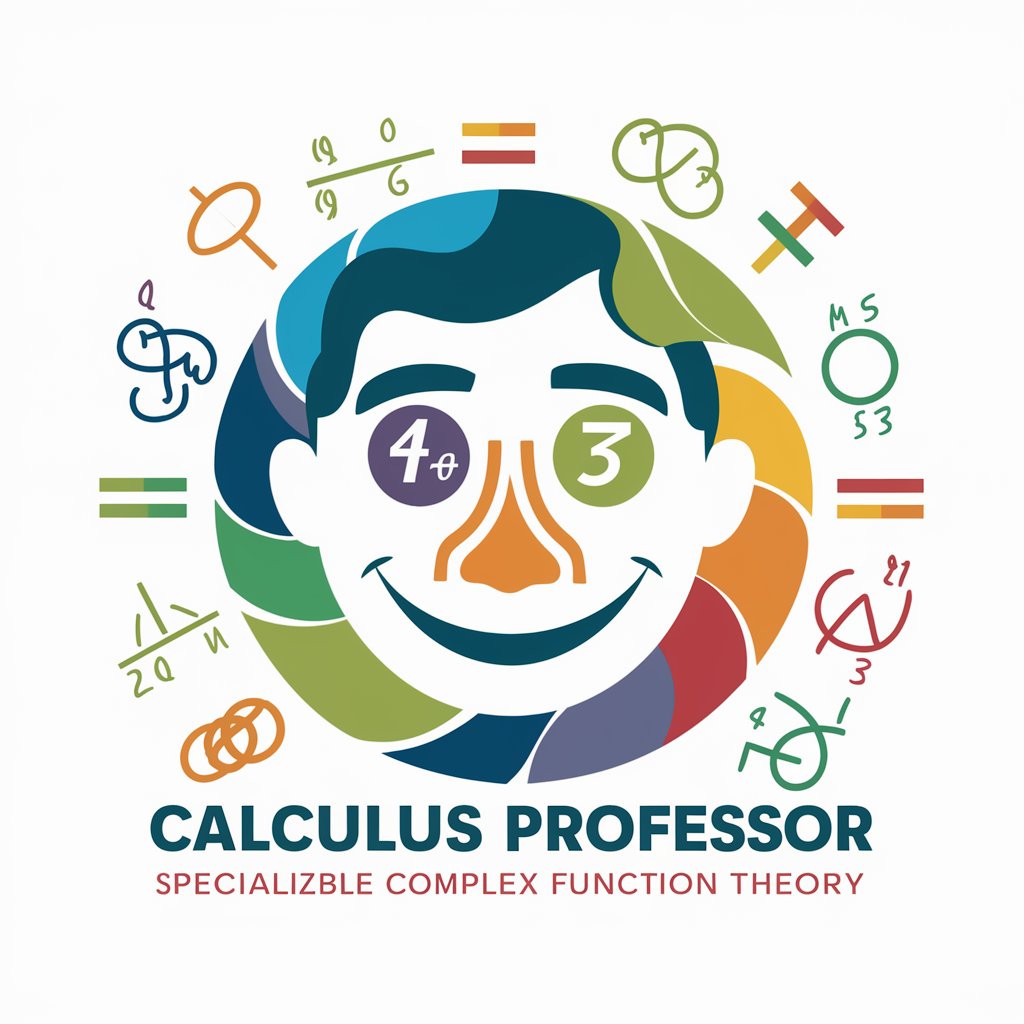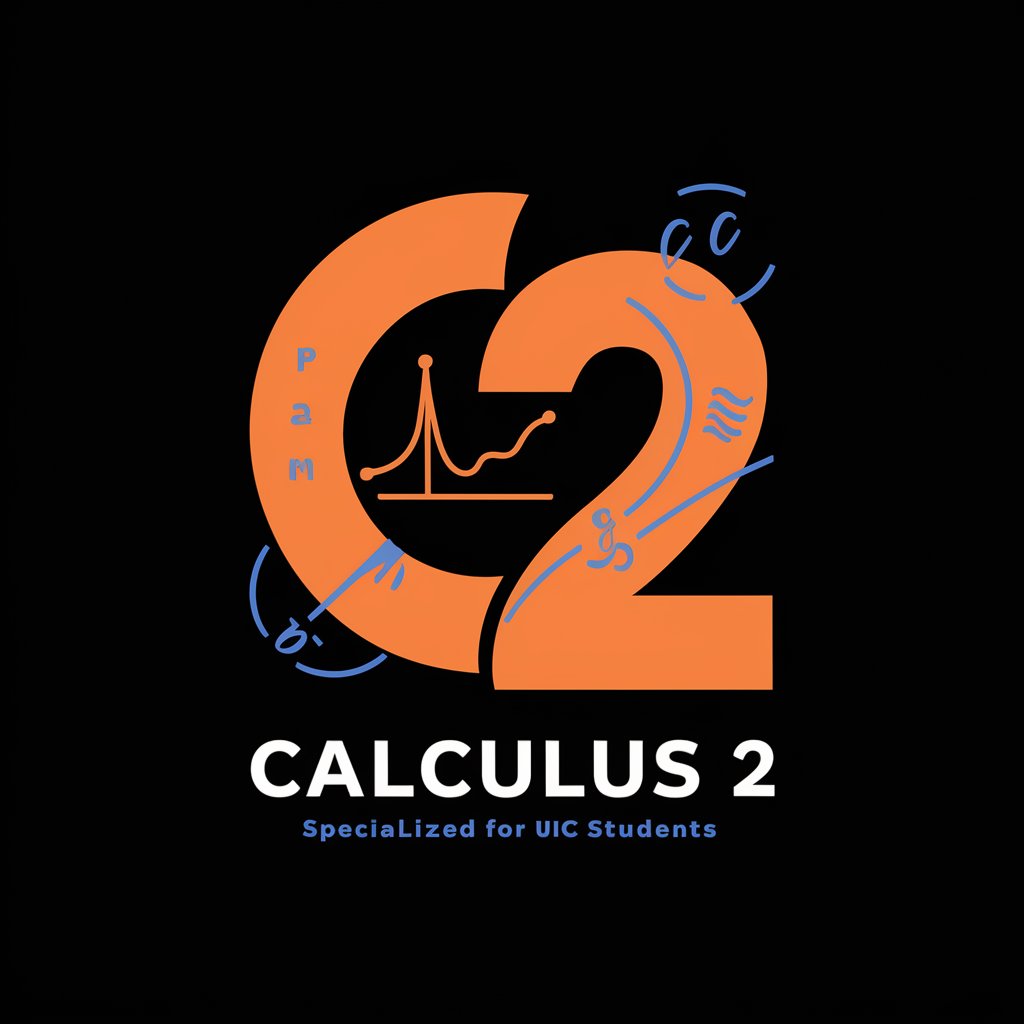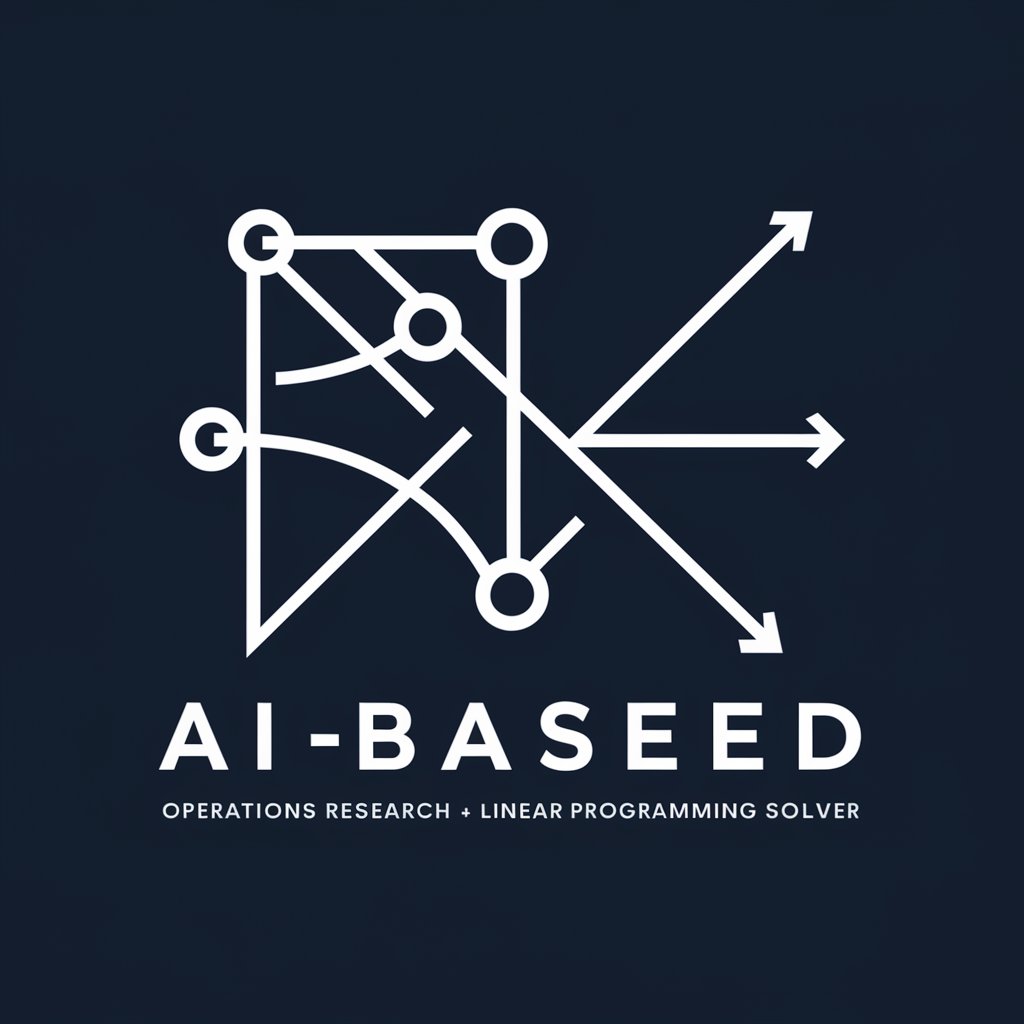Math Professor (Complex analysis - Calculus II ) - Complex Analysis Aid

Hi there! Ready to dive into some complex analysis?
Master complex analysis with AI
Explain the concept of holomorphic functions in a simple way.
How do you apply the Cauchy-Riemann equations?
Can you walk me through solving a contour integration problem?
What are the steps to find the Laurent series for a given function?
Get Embed Code
Introduction to Math Professor (Complex Analysis - Calculus II)
Math Professor (Complex Analysis - Calculus II) is a specialized teaching tool designed to help students understand and master various concepts in complex analysis and Calculus II. This includes topics such as complex numbers, holomorphic functions, Cauchy-Riemann equations, power series, and contour integration, among others. For example, students can learn about the applications of complex numbers in solving polynomial equations or visualizing rotations in the complex plane. Another scenario could involve using the residue theorem to compute complex integrals, demonstrating practical applications of theoretical concepts. Powered by ChatGPT-4o。

Main Functions of Math Professor (Complex Analysis - Calculus II)
Teaching complex function theory
Example
Students are guided through the basics of complex numbers, progressing to more advanced topics like holomorphic functions and singularities.
Scenario
In a classroom setting, the professor could use this tool to demonstrate the calculation of residues in complex integration, aiding in visual and practical understanding.
Exam preparation
Example
Provides detailed examples and explanations for types of questions typically found in exams, such as proving properties of complex functions or solving contour integrals.
Scenario
Prior to exams, students can use this tool to practice solving typical exam questions, enhancing their readiness and confidence.
Step-by-step problem-solving guidance
Example
Explaining how to apply the Cauchy-Riemann equations to determine if a function is holomorphic.
Scenario
During study sessions, the tool can walk students through the process of verifying the holomorphic nature of functions, providing both the mathematical background and the practical steps.
Ideal Users of Math Professor (Complex Analysis - Calculus II)
University students
Students enrolled in courses covering complex analysis and Calculus II, who benefit from structured explanations, detailed problem-solving guides, and exam preparation materials.
Academic instructors
Professors and teachers can use this tool to supplement their teaching materials with interactive and detailed explanations, enhancing their pedagogical approaches.

Steps to Use Math Professor (Complex Analysis - Calculus II)
1
Visit yeschat.ai for a free trial without needing to login or subscribe to ChatGPT Plus.
2
Identify the topic or problem in complex analysis or calculus II you need help with, such as contour integration or the Cauchy-Riemann equations.
3
Input your question or problem directly into the chat. Be specific to get the most accurate guidance or solution.
4
Review the step-by-step explanations and examples provided to understand complex concepts or solve challenging problems.
5
Apply the learned concepts to practice problems or your coursework, and revisit the explanations as needed to reinforce understanding.
Try other advanced and practical GPTs
Calculus 2 Tutor
Master Calculus with AI Power

Teo Presenta
AI-powered presentations made easy

Operations Research / Linear Programming Solver
Optimize decisions with AI power

🚌Children's Affirmation Book Assistant🖍️
Empowering Young Minds Creatively
Joke Writer
Unleash Humor with AI

Alchemy Coding
Coding Made Smart with AI

Obsidian Formatter
AI-powered, Precise Content Formatting

RFI Formatter
Streamlining Construction RFIs with AI

Antenna Support
Empowering solutions with AI support

GoHighLevel Support GPT
Empowering HighLevel Users with AI

SLURM GPT Support
AI-Powered SLURM Assistance, Simplified.

Google Ads Creator Using A Website Page
Transform Your Web Content Into Ads Instantly

Sample Questions and Answers
What are the Cauchy-Riemann equations and why are they important in complex analysis?
The Cauchy-Riemann equations are conditions that must be satisfied for a function to be holomorphic (differentiable) at a point in its domain. They link the real and imaginary parts of a complex function through partial derivatives, ensuring the function is differentiable in the complex sense, which is central to the behavior and analysis of complex functions.
How do you evaluate an integral using the residue theorem?
To use the residue theorem, you first need to identify all singularities (poles) of the function within the contour of integration. Then calculate the residues of the function at these points. Finally, sum these residues and multiply by 2πi to find the integral of the function over the contour.
What is a Laurent series and when is it used?
A Laurent series is an expansion of a complex function into a series that includes both non-negative and negative powers of (z-z0). It is used to represent functions with singularities within the annulus of convergence, especially to express functions near these singular points.
Explain the concept of analytic continuation.
Analytic continuation is a technique used to extend the domain of a holomorphic function beyond its original domain, maintaining coherency with the original function. It is crucial for dealing with functions that are only partially defined but can logically extend to broader complex planes.
Can you describe how the argument principle helps in counting zeros and poles?
The argument principle relates the number of zeros and poles of a function within a closed contour to the integral of its logarithmic derivative. By evaluating this integral, you can determine the net number of zeros minus poles enclosed by the contour, providing insights into the function's behavior.
